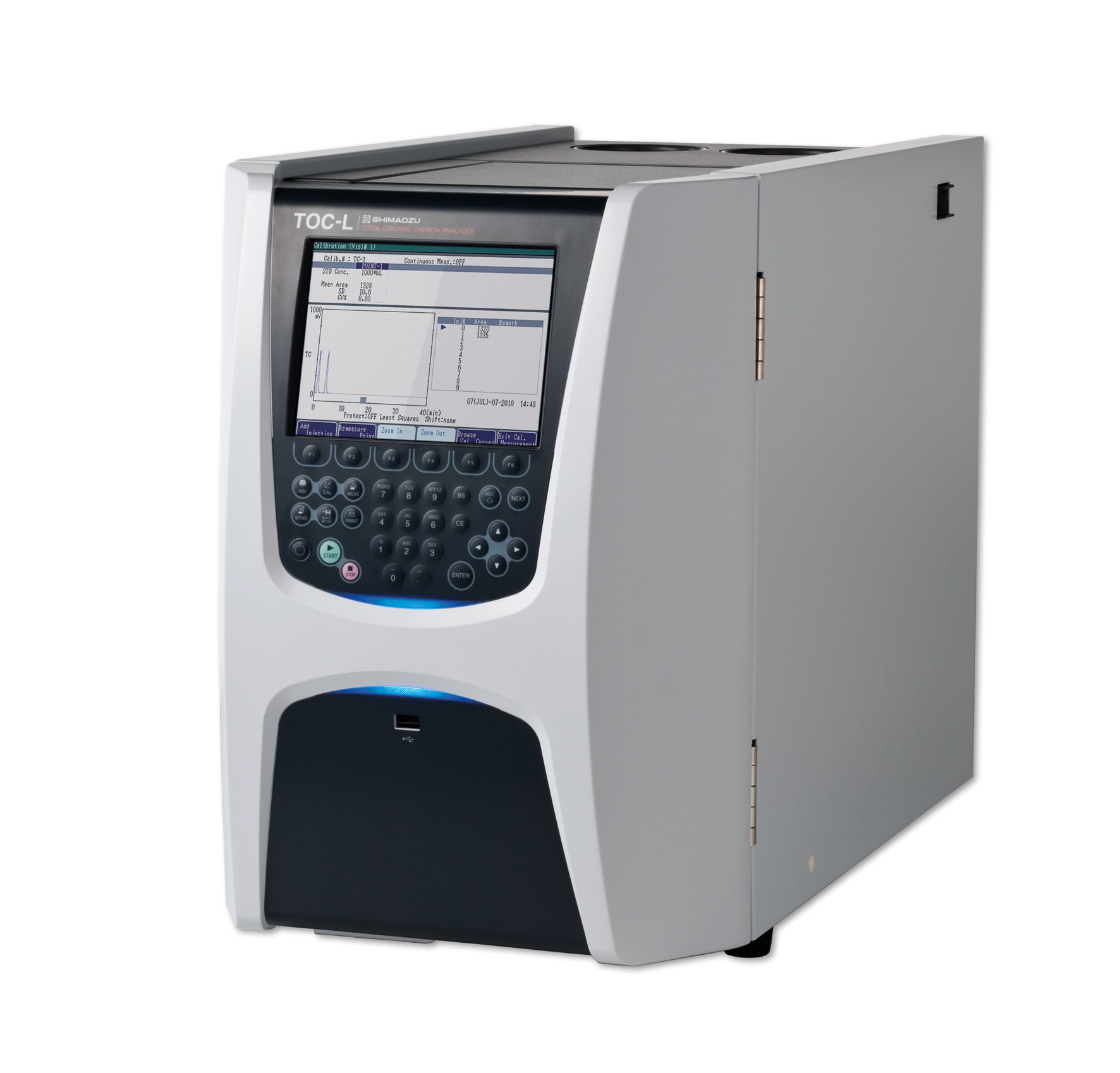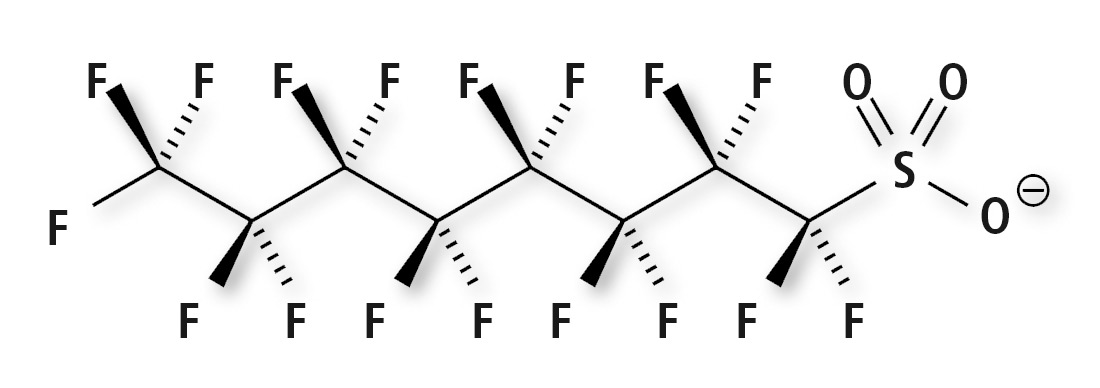TOC determination of a PFOS solution
Comparing wet-chemical oxidation with the combustion method
 Figure 1: TOC-L
Figure 1: TOC-L
Perfluorooctane sulfonate (PFOS) is a man-made organic straight-chain compound consisting of an 8-carbon chain with fluorine atoms bonded to each carbon and a sulfonic acid terminal group. The specific characteristic of PFOS is that the perfluorinated group is non-polar, whereas the polar anionic group is hydrophilic. It is a surfactant that dissolves readily in both oil and water.
 Figure 2: Perfluorooctane sulfonate
Figure 2: Perfluorooctane sulfonate
PFOS is an extremely stable compound due to its strong carbon-fluorine bonds and is therefore persistent in the environment, bio-accumulative and toxic to mammalian species. In October 2006, the European Parliament restricted use of PFOS to a limited number of application areas.
Due to its structure, PFOS is a good example for highlighting the differences in oxidizing power between the wet-chemical oxidation method and the combustion method used in TOC determination. For this application, the TOC content of a PFOS solution was determined using Shimadzu’s TOC-LCPH and TOC-VWS analyzers.
Two methods for TOC determination
Shimadzu offers two TOC systems featuring different oxidation methods. While the TOC-VWP/WS uses wet-chemical oxidation, the TOC-LCPH applies the catalytic combustion method at 680 °C. With their wide measuring ranges from 0.5 µg/L up to 30,000 mg/L, they support many applications, from ultrapure water to heavily contaminated waters (for instance in cleaning validation, extraction solutions or wastewater).
TOC determination of PFOS using the TOC-LCPH
For sample preparation, PFOS was dissolved in ultrapure water and subsequently diluted to obtain a solution of 5 mg/L PFOS (equivalent to 0.961 mgC/L) and 10 mg/L PFOS (equivalent to 1.921 mgC/L). Surfactants like PFOS are prone to foaming, so the difference method was used for TOC determination.
Measurement system: TOC-LCPH with standard catalyst
Measurement method: Difference method (TOC = TC-IC)
Calibration curve: TC: 0-3 mg/L (2 points)
IC: 0-3 mg/L (2 points)
 Table 1: TOC determination results using the difference method
Table 1: TOC determination results using the difference method
TOC determination of PFOS using the TOC-VWS
Measurement system: TOC-VWS
Measurement method: Difference method (TOC = TC-IC)
Calibration curve: TC: 0-3 mg/L (2 points)
IC: 0-3 mg/L (2 points)
 Table 2: TOC determination results of PFOS using the TOC-VWS
Table 2: TOC determination results of PFOS using the TOC-VWS
Summary
The results clearly show that wet-chemical oxidation is not sufficient to break down highly stable compounds such as PFOS. Such compounds require the strong oxidizing power of catalytic combustion at 680 °C offered by the TOC-L series.
This underlines the different application areas of both analyzers. The strengths of the TOC-V series (wet-chemical oxidation) lie in the extremely low detection limit and excellent reproducibility in the lower ppb range. For this reason, the TOC-VWP/WS is particularly suitable for determination in the ultra-trace range.
The advantage of the combustion method is its high oxidizing power, particularly when highly stable compounds and/or particles are present in the sample. In addition, simultaneous TOC/TNb measurements can be performed.
The application range of the TOC-L series is therefore more versatile and encompasses all TOC regions (except for the ultra-trace region < 20 µg/L TOC).